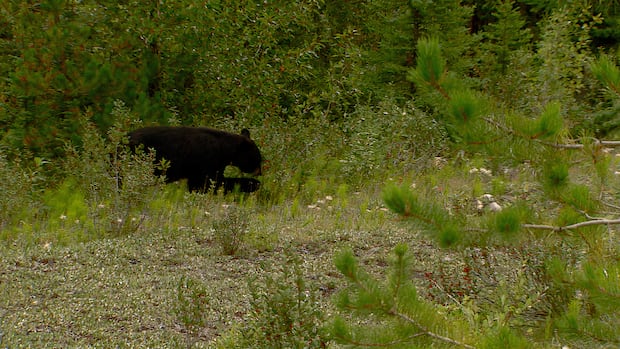Caution advised as hungry bears look for buffaloberries in Bow Valley
Grizzly and black bears depend on the food for survival in the Rockies

Bear in mind that berry season has begun, experts say.
As buffaloberries ripen throughout the Bow Valley, visitors to popular areas in the mountains are being advised to watch out for bears.
Buffaloberries, which are critical to a bear's diet in the Rocky Mountains, grow throughout Banff National Park and Kananaskis — including near trails, campsites and other areas frequented by people.
"We've already started to see some ripening berries, and that's an extremely important food source for our local bears," Parks Canada resource management officer Dan Rafla told CBC News.
"It's probably one of the most, if not the most, important sources of food for both grizzly bears and black bears in this area."
He said bears will be "highly focused" on eating the tiny berries, which are high in sugar and nutrition.
Now that both bear species' mating seasons have largely ended, their priorities shift to eating as they prepare for hibernation. Even though it's months away, because bears spend around half the year dormant, it helps to get an early start on bulking up for the winter.

"Bears are somewhat in a race to put on enough fat and reserves to survive the winter," Rafla said.
"They'll get more intense as the season gets on to the point where they're feeding 20 hours a day."
Other naturally-occurring options for Bow Valley and Banff National Park bears in the summer include chokecherries and huckleberries, but they don't compare to the abundance of buffaloberries. The Rockies "aren't the most productive landscape for bears" in terms of food availability, Rafla said.
But the area looks like it has a good crop of buffaloberries this year, Rafla said. Buffaloberries have been seen a little early this year, likely due to warm temperatures in the valley bottom. That's good news after recent years saw poor berry growth in the Rockies, which can cause problems.
"Sometimes we'll see a little bit more conflict and maybe desperation from a bear to seek out those food sources," he said.
Be bear aware
Seasonal trail restrictions in parts of Banff National Park are designed to minimize human-bear interactions during berry season, particularly in areas grizzly bears are known to frequent.
Those restrictions, which include requiring hikers to remain close together in groups of at least four adults, in addition to requiring bear spray and not permitting dogs, apply to Allenby Pass and part of the Lake Minnewanka area.
The Lake Minnewanka restrictions are in place July 10 to September 15 every year, while the Allenby Pass restrictions run August 1 to September 30.

Nick de Ruyter, program director of the BioSphere Institute's WildSmart program, said bears are likely to be distracted and not paying attention to their surroundings while they feed on buffaloberries. He said it's important visitors avoid doing anything that could surprise or provoke the animals.
"We really need to be making lots of noise so we don't surprise them while they're feeding, and even when we do make noise, they might still not be paying attention because they're so focused on eating," he said.
"They really, really need that food, and they will be very focused on getting that food, and that's the only thing on their mind."

Berries grow easily in places with human disturbance due to better access to sunlight, de Ruyter said, adding it's important to remember this when buffaloberries frequently grow along trails and near parks, campsites, picnic areas and other popular places.
"If you see a bear feeding along the trail, don't try and sneak past it. Wait or find another way around, and just give them that space that they need to feed," he said.
Carrying bear spray is important, but it should only be used for defence and not to remove a bear harmlessly feeding in a hiker's way, de Ruyter said.
He added anyone who sees a bear feeding on the side of the road should not pull over or get out of their car, potentially creating a bear jam.
"I know it's hard to do, because people like seeing bears, but we really have to give them the space to feed, and basically thrive and survive," de Ruyter said.
Buffaloberries are typically ripe from mid-July to September, according to Parks Canada.
To avoid attracting bears in search of berries, the towns of Banff and Canmore offer financial incentive programs for property owners to remove fruit trees.
With files from Dave Gilson


